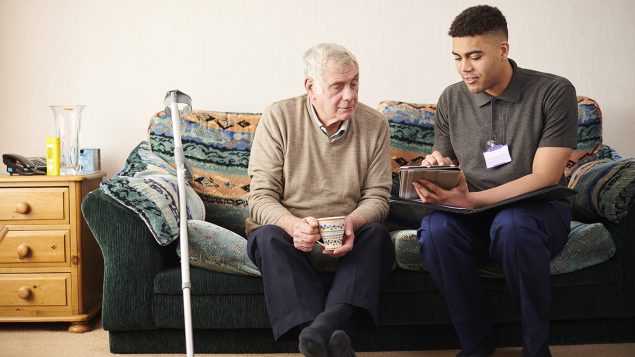Local Health Department’s Role in Fall Prevention

Falls are a leading cause of hip fractures, brain injuries, and death for older adults (aged > 65) in the United States. The Florida Department of Health in Seminole County (DOH-Seminole) conducted a community health needs assessment in 2019 which identified older adult falls as a key health issue in their community. In addition, emergency medical services (EMS) and area emergency departments were seeing an increase in older adult falls which strained both hospital and EMS resources. Better access to affordable, quality fall prevention activities became a priority.
The health department collaborated with community partners to implement the Senior Fall Prevention program and leveraged an existing mobile health program. This program includes a mobile unit that travels within Seminole County to regularly scheduled monthly stops including a community center, senior resource center, and senior living facility. The Senior Fall Prevention program offers environmental assessments, nutritional counseling and support, physical mobility assessments and interventions, and resources and referral services.
A Fall Prevention Coordinator from the health department conducted the home visits. The coordinator worked with each older adult to identify their unique risk factors, such as:
- Medical conditions: Review current older adult’s history
- Medication use: Review how many and which medications
- Physical mobility: Assess gait, strength, and balance using the Timed Up and Go (TUG) test, 30 second chair stand test, and/or 4-stage balance test, depending on physical ability
- Vision and hearing impairment: Check vision and hearing and determine if it has been more than one year since they received exams from a specialist
- Physical assessment: Determine blood pressure and possibility of postural hypotension, heart rate, and oxygen saturation
- Environmental assessment: Scan inside and outside the home to identify hazards that may increase fall risk
The DOH-Seminole Fall Prevention Coordinator then offered strategies or referrals to address any identified risks. Examples of recommendations included:
- Making nonstructural environmental fixes, such as taping down rugs
- Installing brighter bulbs for increased visibility
- Providing non-skid rubber treads for bathtubs
Before intervening, the health department found that hospitalization rates for older adult falls had more than tripled (98.8 hospitalizations per 100,000 older adults to 310.9 hospitalizations per 100,000 older adults) and the older adult fall death rate had doubled (3.0 deaths per 100,000 older adults to 6.1 deaths per 100,000 older adults).
Patient referrals connected older adults to services, such as:
- Elderly affairs services
- Physical therapy
- Diabetes education
- Free clinics
- Doctors such as neurologists, audiologists, ophthalmologists
- Nutrition education and food banks
The visiting coordinator also provided education and encouraged older adults to seek care from their primary care physician or from community resources.
The DOH-Seminole conducted a robust evaluation throughout this pilot program, with technical support from partners (National Association of County and City Health Officials, National Association of State EMS Officials, Health Communications Consultants Inc., CDC). DOH-Seminole was able to use these data to secure funds for the program for the next 5 years.
The DOH-Seminole Senior Fall Prevention program shows the critical role local health departments can play in identifying older adults at risk for falls and connecting them with fall prevention resources. For more information about how local health departments can work with clinicians and communities to prevent falls, visit NACCHO’s Older Adult Fall Prevention site.